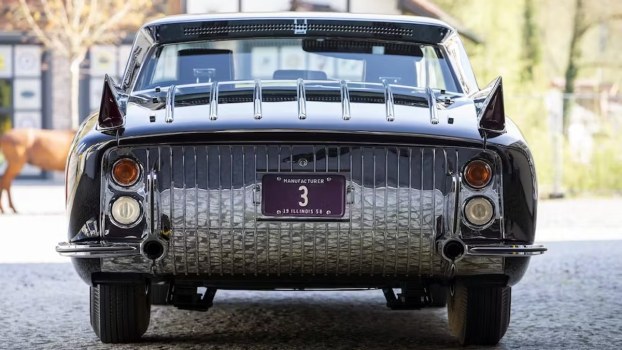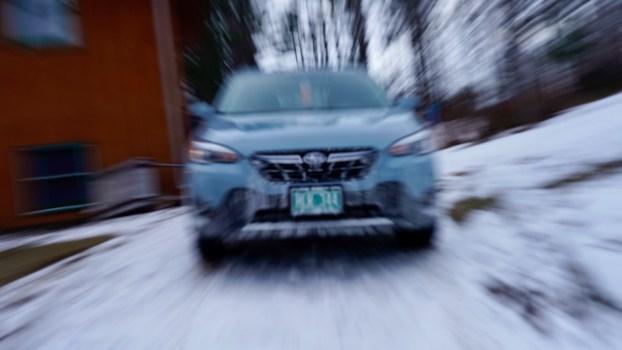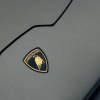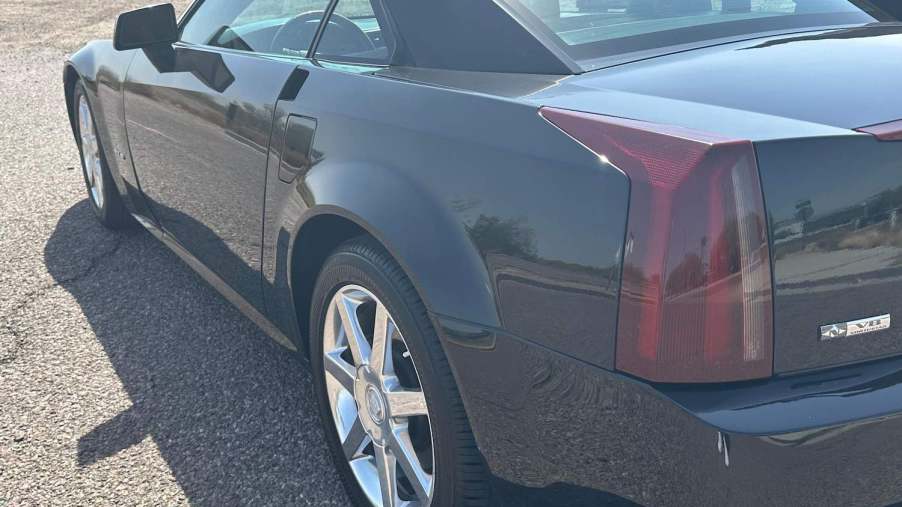
One of the more unique cars to come out of Detroit in recent years is the XLR, a forgotten Cadillac flagship built on a Corvette chassis (2004-2009). Today, this V8 coupe often resells for under $20k. If you hunt, you can even find one for $12k. It boasts Cadilac swagger, parts compatibility with a known Corvette drivetrain, and the street cred you can only get with a niche classic–what’s not to love? Honestly, the Cadillac XLR’s tail lights. They are finicky, impossible to work on, and could cost you $7k to replace.
The 2004-2009 was a Cadillac flagship sports car on a Corvette chassis
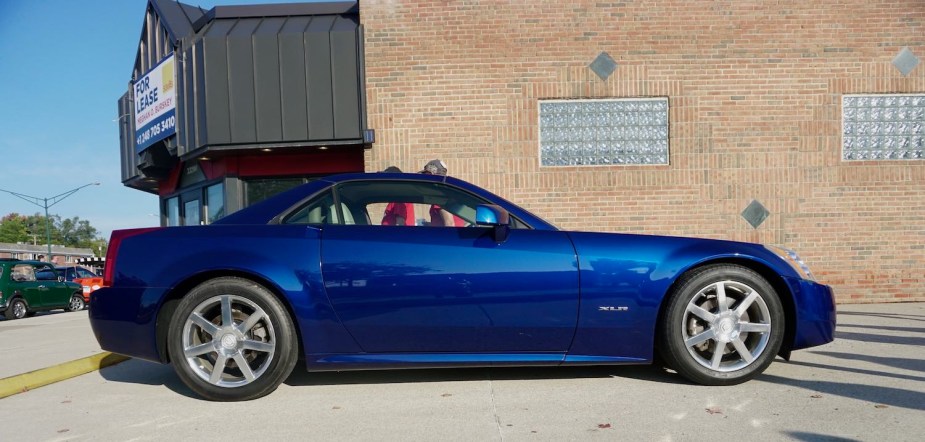
I was wandering through a Detroit Metro Area Cars & Coffee meet when something caught my eye. It was a long, sleek sports car finished in dark blue. Mercedes S-Class? Nope, it had a Cadillac logo. It was an XLR.
The Cadillac XLR featured a 4.6-liter V8 rated for 320 horsepower and 310 lb-ft of torque. The contemporary (C6) Corvette had a 6.0-liter rated for at least 400 horsepower and lb-ft. Cadillac obviously wasn’t engineering the XLR for straight-line speed. But it was the first Cadillac with adaptive cruise control and heated/ventilated seats.
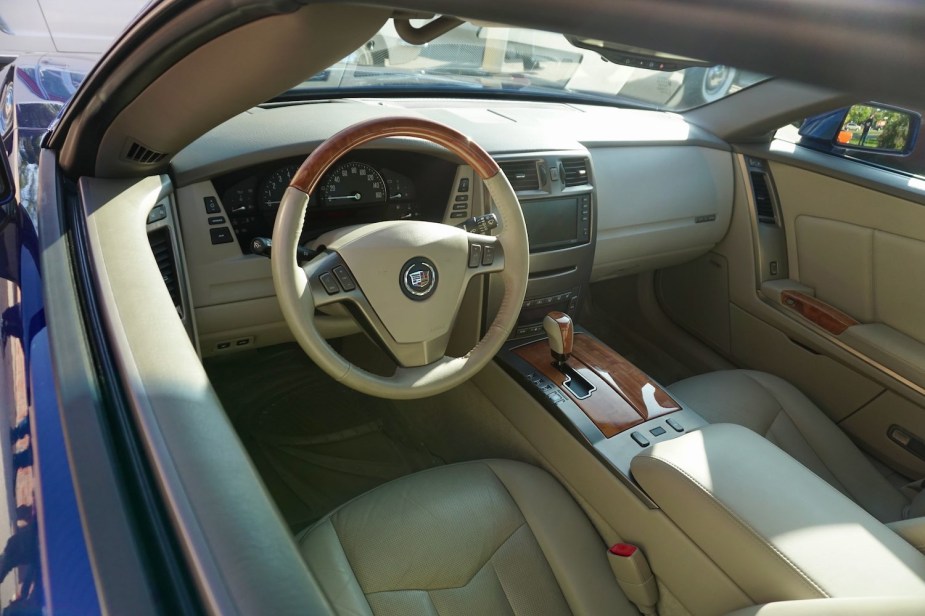
In person, it had a Cadillac amount of road presence while also looking sporty. That’s not an easy line to walk. I wouldn’t say it was everyone’s favorite car, but it was drawing a good crowd. Much of the appeal of the Cadillac XLR is how rare it is.
Today, the XLR is a compelling option in the used luxury sports coupe market–if you can find one. But there’s one thing holding it back: tail lights.
You can blow $7k replacing Cadillac XLR tail lights
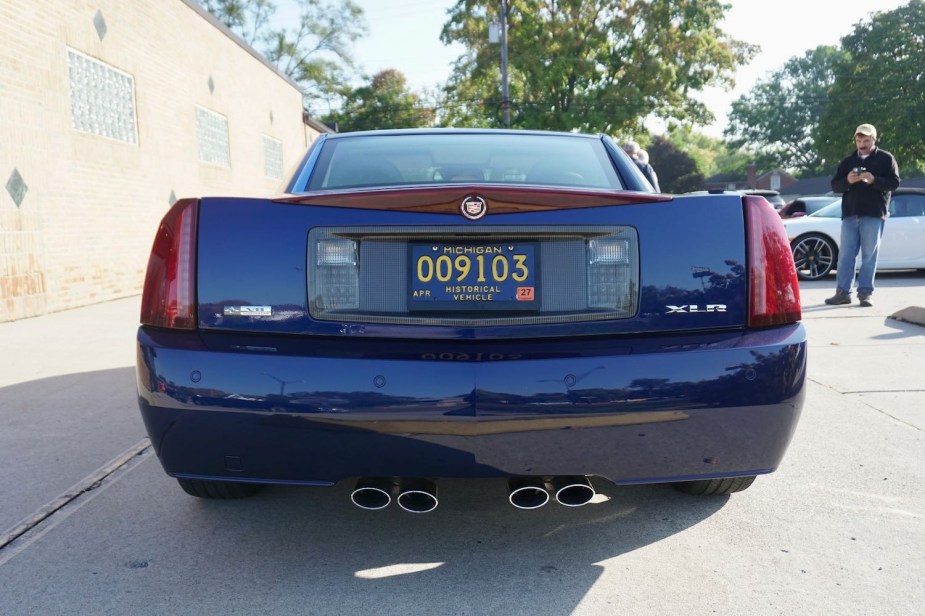
While I ogled the Cadillac XLR at my Cars & Coffee and told myself I had room for another project, someone joked: “That right there is a twelve-thousand dollar car with seven-thousand dollar tail lights!”
I thought, Surely, they’re exaggerating a bit. Then, I went home and did some research. It’s all true. You can get an XLR for $12k-$20k (such as this $19k example on Cars & Bids). And there are single Cadillac XLR tail lights listed for up to $3,500+ on eBay. So how in the world can XLR tail lights be so expensive? Three words: Rare. Fragile. Unreparable.
Let’s start with rare. Cadillac only made 15,460 XLRs between 2004 and 2009. So that’s just…thirty-something-thousand tail lights. Compare that with millions of cars that used the exact same sealed-beam headlights between 1948 and 1986. Finding a replacement for one of the latter is a cinch. But why would your local Autozone stock a new headlight assembly for something as unique as the XLR?
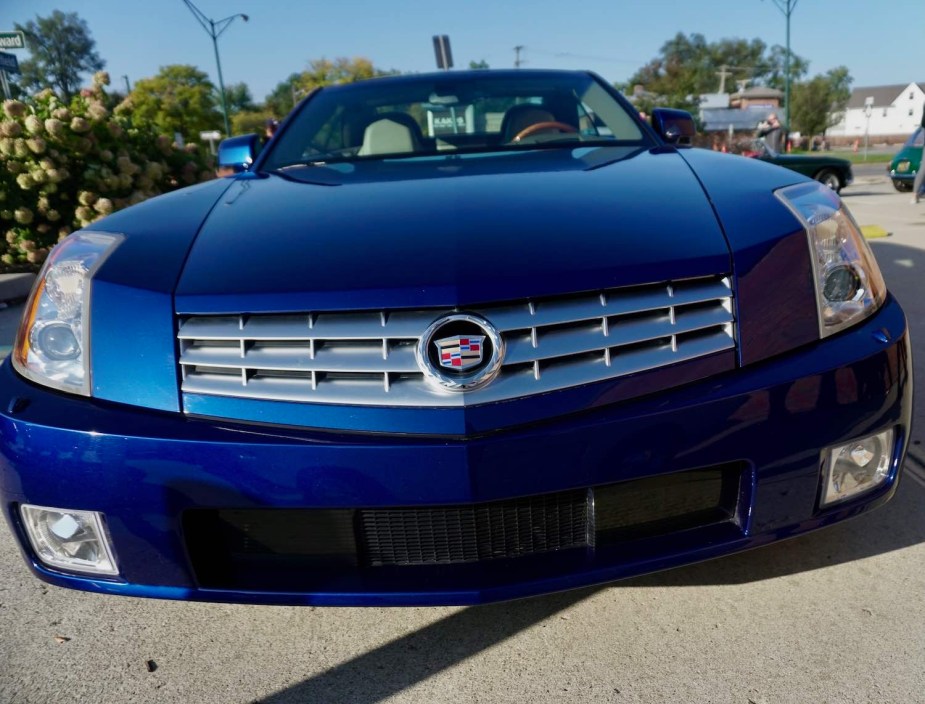
Secondly, tail lights just break. They are at the outside corner of the car. So even in the slightest fender bender or poor parallel parking job, and pop. There goes a tail light. But the XLR tail lights are worse for two reasons: they are long ridges that stick out from the rear of the car (think glass fins, that’s a real solid idea). And they are made of circuit boards and LEDs, which were cutting-edge and not yet reliable in 2004. The result is fragile.
Finally, the XLR tail lights are nearly impossible to repair. Or even maintain. They are sealed units; they are glued together instead of fastened with screws. If you can pry them apart without shattering them (hint: heat the glue up to at least 180 degrees), you’ll find the circuits and LEDs are all integrated. That’s right, you can’t just unscrew one LED bulb when it burns out. You can’t even wire a single replacement bulb into the pigtail: each tail light includes its own microcomputer.
Cadillac, why would you do this to us?
Planned obsolescence, or no plan at all?
The phrase “planned obsolescence” gets thrown around a lot these days. An example would be an iTunes song that you “buy” but will delete itself after you play it 1,000 times (hey, don’t judge me for having Lizzo on repeat!). You might argue that Elon Musk’s choosing touch screens he knew would fail in five years was Tesla planned obsolescence.
So, was Cadillac designing XLR tail lights to fail? Probably not. If so, you’d think GM would have a stockpile of replacements it was eager to sell us at a steep markup. But one reason XLR tail lights are so expensive on eBay is that they almost all come out of another car.
The great XLR tail light caper is probably more bumble than Cadillac conspiracy. The automaker wanted a sharp line at the rear corners of the car and designed a huge tail light housing to accomplish this. But in 2004, it was not considering reliability or repairability. It piled together a bunch of finicky components, glued everything in place, and called it a day.
I believe automakers have an ethical and environmental responsibility to offer us vehicles we can keep on the road for as long as possible. And there’s a legal precedent for our right to repair. Something like a tail light is doubly important because it’s also a safety feature. Luckily, 2004-09 really was the dark ages of overly complex vehicles that were nearly impossible to repair; things are looking up today. But here’s to looking backward and learning a thing or two.
Next, find out why the Alfa Romeo 4C might be the perfect used sports car, or see the Cadillac XLR for yourself in the video below:

